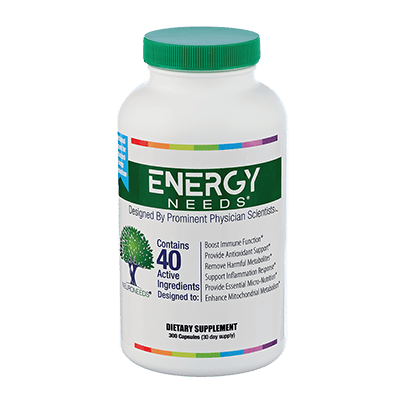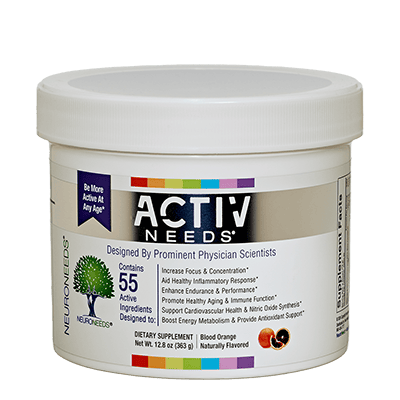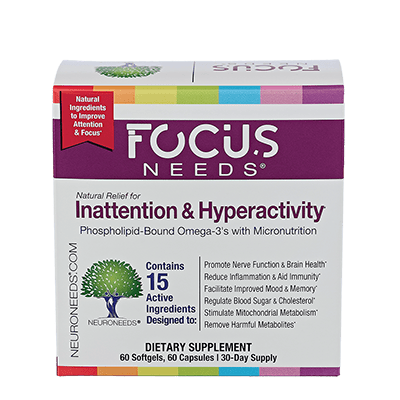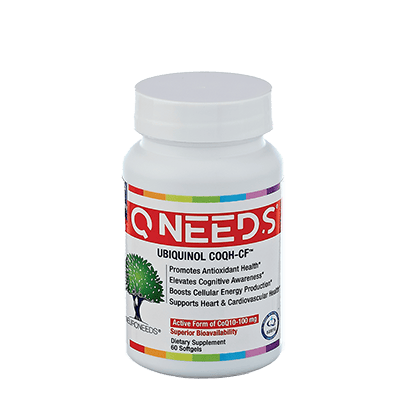By: Dr. Pejman Katiraei; D.O. – Published March 23, 2020
In this 1 hour video presentation titled “Anxiety Is Not Anxiety: When Mito Errors Cause the Nervous System to Falter“, Dr. Pejman Katiraei offers his observations on anxiety.
In addition to the video link above, below is a written summary of his experience treating patients suffering from foggy brain, impaired judgement, inability to think clearly, mood-swings, anxiety, and even severe depression.
A dear 7 year-old boy came to see me because of severe irritability and anxiety. He was impulsive and had difficulty controlling his own actions. He was quick to upset, and when he was tired, he would go into episodes rage and intense anger. After his explosive, rage episodes, he would come out of that dark state and express remorse for the way he acted. He told his mom, “I don’t want to act like this.” This boy’s self-esteem over the years sank lower and lower, as he came to consider himself as “bad.”
His mom had tried every parenting trick in the book. She worked with occupational therapists and behaviorists, but still this little boy was unable to control his behaviors. He tells his mom that “life is hard,” and that he is “too tired.” He prefers to sit and play video games, rather than running around and being physically engaged. Underneath the turmoil and anger lies a sweet, loving boy who genuinely wants to love others, but why does he not control his behaviors? Why does he choose to act this way? These are the questions that have eluded his mother and the therapists she has worked with.
Does this sound familiar? Could this be your child?
Perhaps this little boy and YOUR CHILD do NOT CHOOSE TO BE THIS WAY. PERHAPS YOUR CHILD ACTUALLY HAS NO CONTROL OVER WHAT IS HAPPENING TO HIM OR HER. Your child, as with this little boy, may have physical/physiological reasons why they act out. Your child may be ill, and we simply are unable to understand or see this illness because it is so subtle.
In the book, “Acquired Mitochondropathy – A New Paradigm in Western Medicine Explaining Chronic Diseases,” Dr. Enno Freye states, “What allows the brain to work quickly and efficiently is its energy supply.” He goes on to describe what happens if the energy supply is disrupted. One can end up with: foggy brain, impaired judgement, inability to think clearly, mood-swings, anxiety, and even severe depression. Does this look familiar?
Energy is the currency of life. Without it, we perish. Energy is needed for every organ and system within our body to function, and these systems include: the brain, muscles, liver, adrenal glands, gastrointestinal tract, kidneys, etc. There is no system within the human body that can function without energy.
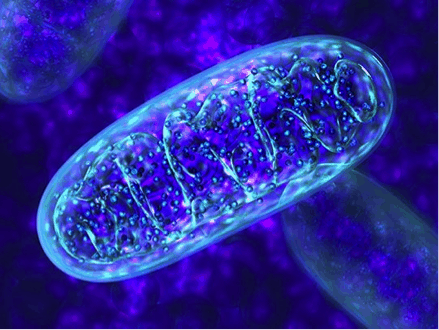
The mitochondria are tiny little energy production plants (little generators) in each and every cell within our body. Simply stated, they take the food we eat (sugar, protein and fats) and convert it into electricity (ATP) that powers our cells. This electricity is critical for cells to function. Without this electricity, the cells cease to function and we die.
In modern medicine, physicians are taught to only look for catastrophic metabolic errors (issues with mitochondria and energy product as a whole). Physicians believe that only those errors that can kill us are real. We take for granted that all individuals can produce energy easily and efficiently. But what if that is not the case? What if there is a spectrum?
Consider this: What if there is a physical/genetic/physiological reason why some people become super athletes and others don’t?

.
Why are some children full of energy, robust, strong and can run all day without getting tired, and others are the opposite?
What if there is a PHYSICAL REASON why your child is, “just lazy,” “likes to sit and play quickly by herself,” “not athletic,” “clumsy,” “the gentle child.” These findings are there for a reason.
I love working with children because tell us exactly what is going on through their actions and behaviors. Children are an open book. We just simply need to develop the language to learn how to read them and understand what it is that they are telling us. You see, the little boy who told her mom that, “life is hard,” perfectly described his experience to her. It was just that no one before me had learned how to decipher his code.
In over a decade of working with children who have severe behavioral challenges, I learned to look beyond the obvious issues and look for very subtle errors. What is seemingly “normal,” is not always normal. As a parent, you likely have always known in your heart of hearts that something was not “okay” with your child. But I am sure when you have spoken to other physicians, you have been told that, “everything is okay. Don’t worry!” Your instincts may be right, but the answers you have sought out were hidden, because we did not know how to look for them.
If your child has even a mild or moderate inefficiency or error in producing energy from the foods they eat, this disruption in energy production can have serious consequences throughout their entire system.
Consider if you have two flashlights. Both turn on and produce light. Both of these flashlights “work,” and in our current model if a flashlight turns on, it is “okay.” If it produces any light, “there is nothing wrong.” Except one flashlight is dim and generates little light, while the other is bright and generates a lot of light!

Children who have subtle errors in energy production can still produce energy. Everything seems to be working, except the light within their cells is dim. Why does this matter?
Let’s look at each system and see what happens when the cells are dim with low energy. The most energetically sensitive system within our body is the brain. Studies have shown that adults with diagnosable mitochondrial disease have a 60% chance of having major depression, agoraphobia and/or panic disorder, generalized anxiety disorder, social anxiety disorder and psychotic syndromes.[1] When there is a major disruption in energy, as with these adults, the brain literally goes haywire. The brain does not like disruptions in its energy supply!! But what about your child?
One researcher tells us, “mitochondria….are essential for neurotransmission…..”[2] Basically, for brain cells to efficiently communicate with one another, they need energy. The author goes on to say, “ATP…fuels essential neuronal processes, including the maintenance of ion gradients across neuronal membranes, neurotransmitter accumulation in and release from synaptic vesicles, trafficking of receptors and ion channels to and from the cell surface, intracellular signaling….” What does this mean? Basically, EVERY SINGLE process needed for efficient brain functioning is dependent on robust energy production. Brain cells work very hard and therefore REQUIRE A LOT OF ENERGY.
For brain cells to communicate to one another, they release chemicals into the synapse, which is the space between the brain cells. They do this by filling little bags (vesicles) with various types of chemical signals, and then transport this bag of chemical signals to the synapse and dump out the content of the bag into the space between the brain cell. It turns out that this process requires HUGE amounts of energy.[3] In fact, if there is a disruption in energy production, you end up getting “synaptic fatigue.”[4] Synaptic fatigue is basically fatigue of brain cell to cell communication. If you can only imagine what kind of a mess that would create!
You see, that little boy, or your son or daughter, may have a reason for saying that “life is too hard.” It is not that they just feel physically tired, but it may that their brain, at the cellular level is also tired! It may be that their cells are on, but functioning not nearly as efficient as they can. They feel drained, at a core level.

To imagine what that is like, I need you to think back to how you felt when you had the flu. Imagine that state of physical and mental fatigue. In another form, this is the experience that many children with behavioral problems experience EVERY DAY of their lives. Could this be the reason why your child acts out?
Now what happens if cells cannot conduct signals efficiently? What happens when there is synaptic fatigue? You know the “foggy brain” Dr. Freye describes? That is just one manifestation of this error. Poor attention, concentration and mood, are just a handful of other manifestations. In order to have effective concentration, we need enough chemical compounds like dopamine in our synapses. ADHD medications like Ritalin work by increasing dopamine levels. Do you know how dopamine is produced and released into the synapse? Through efficient cellular functioning that requires a ton of energy!
But the story does not stop here! Many children who have various behavioral issues have challenges with sensory processing, and are ultimately diagnosed with sensory processing disorder. It turns out that 64% of children with ADHD have a sensory processing disorder.[5] What is sensory processing disorder?
“Sensory processing refers to the way the nervous system receives messages from the senses and turns them into responses. For those with Sensory Processing Disorder, sensory information goes into the brain but does not get organized into appropriate responses.”[6] In other words, sensory processing disorder shows up basically when your child’s brain’s ability to process the information from the world around them through their senses is messed up! Another way to look at this is that there is just too much information coming into the brain from too many places at one time, and this basically causes a short-circuit within the brain.
When there is a sensory processing disorder, we see things like:
- Constantly fidgeting or moving
- Easily distracted and loses focus
- Becomes distracted, upset or overwhelmed in loud or crowded spaces
- “Forgets” what they were told, especially in loud/crowded spaces
- “Clumsy” and regularly running into things
- Reading is more difficult than other tasks
- Distorted body senses or overly sensitive
- ……EASILY OVERWHELMED BY LIFE’S EXPERIENCES
Now, you may be asking why this happens. Well there are many reasons, but let’s look to see why a dimly lit brain cell can be one reason.
According one author, ““The Prefrontal CortexFCis a unique associative cortical region that receives multimodal inputs from sensory regions, limbic structures and neuromodulatory nuclei and is taxed with processing these heterogeneous inputs to effectively guide ongoing behavior.”[7] In English, what this author is saying is that the Prefrontal Cortex of our brain is key is helping to process all the information that comes in at one time.
It turns out that we have these “GABAergic interneurons” in various parts of our brain, especially in the Prefrontal Cortex. These GABAergic interneurons, “act as an important brake on excitatory signaling, control spike generation and timing, and prevent incoming excitation from afferent structures from causing runaway feed-forward excitation.”[8],[9] In other words, these GABAergic brain cells are KEY in regulating the flow of information within our brain, and may play a critical part in preventing sensory processing problems by slowing down the excess flow of information coming in at one time.
One author even says that, “PV interneurons (one type of GABAergic brain cell) are highly active to help maintain a high level of inhibition relative to excitation in pyramidal neurons….This may help dampen… distracting information…”[10] What does this have to do with mitochondria and energy production? Well, it turns out that these cells “have high energy demands and rely heavily on mitochondrial energy metabolism…Mitochondrial dysfunction in PV INs could result… impairment of complex information processing.”[11]
Did you catch that? If there is not enough energy, the BRAKING SYSTEM OF THE BRAIN STARTS FALTERING. Imaging driving a car, and when you come to press on the brakes, they only work at 60% of normal capacity, and then you end up getting into an accident. EXCEPT THIS IS YOUR CHILD’S BRAIN, AND THESE ACCIDENTS ARE NOT PHYSICAL. Imagine brain signals flying all over the place at high speed without good brakes, so they crash into one another. These brain signal accidents are what YOU OUTWARDLY SEE AS ANXIETY, ADHD, IRRITABILITY, AGGRESSION, IMPULSIVITY… This same author tells us that if these GABAergic cells lack energy we end up getting, “abnormal sociability and sensory gating.” This means that social interactions are distorted, as are one’s ability to handle the influx of information through the senses.
YIKES!! So one reason why your child may be impulsive, aggressive, irritable, quick to upset, anxious, etc. is because they have too little energy to efficiently power their brain cells to allow their brain cells to do all the heavy work that is required of them.
In countless children, I have witnessed a change in behaviors within 1-2 weeks of starting supplementation to increase mitochondrial function and energy production. Parents report children having a brighter demeanor, smiling more often, laughing, and even talking and communicating in way that they did not do before. Allowing the brain to have enough energy to do its work is critical, and now we have the means to easily accomplish this. But there is still a lot more to this story than just this piece…

What is another organ system within the body that is very dependent on energy production? The muscles! When your child lacks energy, they lack the energy to move their body! He may tire easily. She may prefer to “sit and play quietly” instead of running around. He may be cautious in how he uses his body because his body lacks the strength to protect him if he falls. Why is movement important?
Dr. Williams, a brilliant researcher tells us, “The foundations of complex human thought and behaviour have their origins in action…Cognitive development is integrally entwined with movement experiences, which lay the foundations for the next level of brain development….
Mastering motor proficiency with sensory integration is fundamental to learning.”[12]
Dr. Williams goes onto say, “Babies who crawl on their tummies and creep on their hands and knees are stimulating thousands more neural pathways than a baby who can only lie, or sit, in one position….(and create) an automatic sense of body position and self-control.” Basically, movement is NEEDED for us to integrate our nervous system into our body, and this is CRITICAL FOR your child to be able to efficiently process information from the world around them and for SELF-CONTROL.
Another author teaches, “Crawling is not only a preparation for walking but a multifaceted process assisting in the development of many components such as body scheme, motor planning, visual perception and eye-hand coordination.[13] Motor planning, visual perception and eye-hand coordination are absolutely essential for your child’s ability to manage the information that comes into his or her brain, and that is the foundation for effective focus, concentration and learning!!!
In other words, lack of movement is another reason why sensory processing disorders occur. What do occupational therapists do? They help children learn how to move. These brilliant therapists help older children recreate the movements they failed to do when they were younger to integrate (connect) the different parts of their brains!!!
When the mitochondria are running inefficiently, children lack energy. When they lack energy, they don’t want to move. Movement are far more challenging for children who “have low tone,” so they prefer to sit “and play quietly.” These same children often were late to roll, crawl and walk. Some of these children, myself included, did not crawl at all. Some of these children, when they do run, they run just for short periods and then want to rest. They don’t jump aggressively or really utilize their bodies in a way that activates all the critical pathways described by Dr. Williams. This lack of movement compounded by the energy deficit within the brain itself creates a serious double whammy that creates a sensory traffic jam within the brain, and this wreaks havoc in your child’s mind.
But this deficit in energy production is not just limited to the brain and muscles. It turns out that the adrenal glands also get hit.[14] Adrenal glands are also very energy hungry organs. They have to transport cholesterol into their membranes, than through many complex enzymatic processes, convert cholesterol to critical hormones like cortisol and DHEA. When the adrenal glands don’t work well, you get a child who is “tired but wired.” These children wake up irritable in the mornings, crash in the afternoons only to get a surge of energy in the evenings, which then causes them to have a hard time falling asleep.
Ultimately, every organ in the body in a small or large way is dependent on the mitochondria for energy, and when the lights are dim, the organs within the body are dim as well.
Twenty years ago, we had no awareness of these connections. Twenty years ago, we could not see this subtle state of illness that lurks deep within the cells and systems of countless children. Perhaps this is why your child suffers as well! We certainly had no idea that any tools were available to help address and fix these metabolic and mitochondrial errors, to resolve this state of illness.
Fortunately, we are living in the 21st century. Thanks to the work of brilliant researchers and physicians like Dr. Richard Boles MD, we now have incredible metabolic tools and supplements to correct these errors, and help the child with dim energy be able to shine bright (from within)! By helping your child’s light burn bright, you too can help them enter a state of optimal functioning that can help them experience life in a way that was unimaginable before.
Energy is the foundation of life, and when your child has enough energy, they have the strength and capacity, mentally and physically, to handle what life throws at them. When your kid has abundant energy, he has more capacity to run and jump. Her muscle strength will improve, and she will be able to guard herself against falls and have a greater sense of physical security and safety, thus allowing her to be more courageous in her movements. The more he moves and uses his body, the more he will activate his vestibular and proprioceptive systems which are key for integration of sensory input. If your child is already in physical or occupational therapy, you will find that she has a much easier (and enjoyable) time doing the therapy, because she finally has the capacity to do the hard work that is asked of her.
But the benefits of robust mitochondrial functioning and energy do not
stop there. The brain finally has the energy it needs to efficiently process
all the information that is coming in at one time. When energy in the brain is
optimal, you may find that your child is more alert and yet calm. She is
suddenly more focused and attentive. The sounds and environments that use to
bother him, don’t bother him as much. You may find that the dark circles under
her eyes improve and that she wakes up more easily in the mornings.
When your child’s body finally has the energy it needs to function optimally, its inherent healing wisdom comes to life and seemingly magical things happen before your eyes. Except this is not magic! This is the science of the 21st century!
In health!
Pejman Katiraei, DO (Dr. K)
Please visit www.wholisticminds.com or www.wholistickids.com for more information about Dr. Pejman
Katiraei and his work.
[1] Mancuso M, et al. Neurol Sci 2013, 34, 71–74
[2] Manji H, et al. Nature Reviews Neuroscience 2012, 13, 293–307
[3] Inan M, et al. Neurobiol Dis. 2016 Sep;93:35-46
[4] Manji H, et al. Nature Reviews Neuroscience 2012, 13, 293–307
[5] Pfeiffer B, et al. Physical & Occupational Therapy In Pediatrics, 2015: 35(1); 1-12
[6] https://www.spdstar.org/basic/understanding-sensory-processing-disorder accessed 02/01/2020
[7] Ferguson BR, Gao W. Front Neural Circuits. 2018; 12: 37
[8] Rudy E, et al. Dev Neurobiol. 2011; 71(1): 45–61
[9] Ferguson BR, Gao W. Front Neural Circuits. 2018; 12: 37
[10] Ferguson BR, Gao W. Front Neural Circuits. 2018; 12: 37
[11] Inan M, et al. Neurobiol Dis. 2016, 93, 35-46
[12] Williams J, Holley P. Australian J of Child and Family Health Nursing, 2013: 10(1); 15-21
[13] Visser MM, Franzsen D. S. Afr. j. occup. ther. 2010, 40(2), 19-23
[14] Merry B. J Anat. 1975, 119(3), 611-618
The Content within this article and NeuroNews Blog is not intended to be a substitute for professional medical advice, diagnosis, or treatment. Always seek the advice of your physician or other qualified health provider with any questions you may have regarding a medical condition. Never disregard professional medical advice or delay in seeking it because of something you have read on this Blog.


